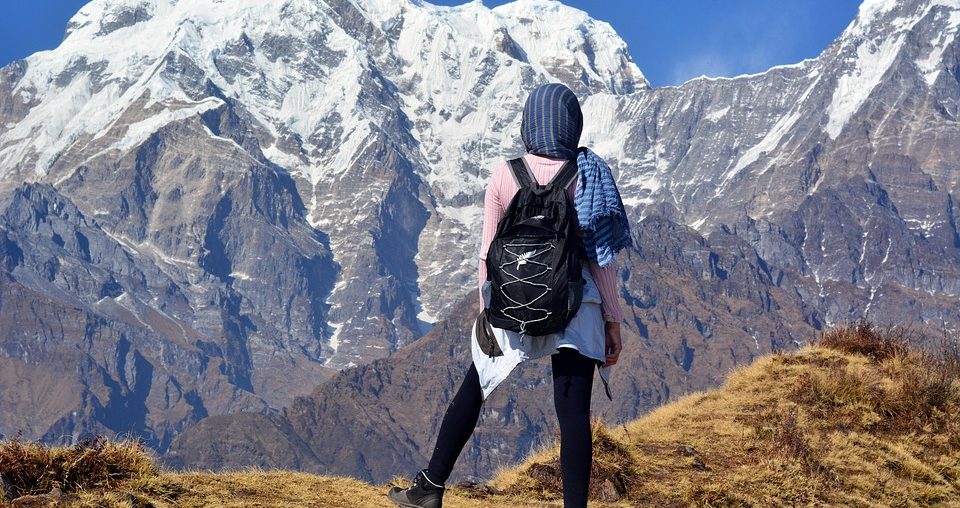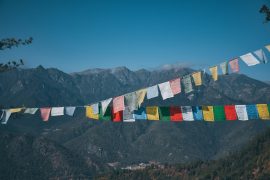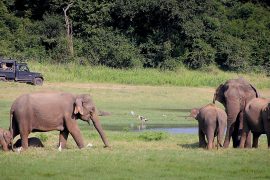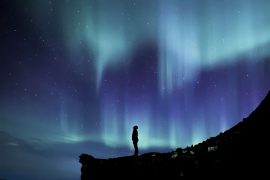After the Everest region, the Annapurna mountains are probably the most famous trekking destination in Nepal. I was lucky enough to explore some of the area on foot a few years ago, so here’s my guide to what to expect when you’re trekking in this part of the country.
Stunning scenery
I know this will be something that everyone says about visiting Nepal, but it really is true. It’s hard to describe just how unbelievably beautiful some of the valleys and mountain ranges are. One of my favourite views was from Kagbeni, looking down the valley I’d just walked up from Jomsom. With the river glistening in the sunlight it was an amazing scene.
Another view that I’ll never forget is watching the sunrise over the Annapurnas (including Annapurna South and the Fishtail Mountain) from the top of Poon Hill (more about that in a bit). The golden colour of the sky and the pink hues of the snow on the peaks made this vista really magical.
Challenging trekking
The Annapurnas are a great place to visit if you’re looking for something of a challenge. You don’t need to have lots of trekking experience to enjoy the walking here, but a moderate level of fitness is required if you want to make the most of your time in the mountains.
There are steep up and downhill sections (as you’d probably imagine given the mountains), so you need to be prepared to put in quite a bit of effort at times. The climb up Poon Hill is one that springs to my mind as being particularly challenging, not least of all because you’re doing the final part of it in the dark to make it to the top ahead of the sunrise! Although I may have cursed a few times on the way up, it was more than worth the aching legs for the views I was rewarded with at the summit.
Comfortable, but basic, accommodation
Personally, I loved staying in the little teahouses scattered around the trails in the Annapurna region. They are often in the middle of nowhere and have a very friendly and welcoming atmosphere.
If you’re into luxury travelling, this isn’t for you, but I found the beds were comfortable and the rooms were usually pretty clean. One thing that I particularly liked was that most of the hot water was heated by the sun, as all of it is stored in large black containers on the roofs of the teahouses. The downside to this, however, is that there’s a finite supply!
Don’t expect there to be electricity all night, either, as many of these remote lodges have generators that are turned off not long after darkness falls.
The food you get at the trekking lodges is delicious, with local specialities like dal bhat (a lentil-based dish) often featuring. You’ll always have plenty to keep you going throughout the day, as I found the portions for breakfast, lunch and dinner were always pretty substantial.
Beautiful temples
One of the main things that stuck in my mind about the Annapurna region (aside from the mountains) were the temples. There are Buddhist and Hindu places of worship located throughout the region and I felt very privileged to be shown around some of them during my trekking adventure.
The temple at Muktinath, which is a pilgrimage site for Buddhists and Hindus, was one of my favourites. There are water fountains in a semi-circle around one side of the building, which create a very tranquil and calming atmosphere.









